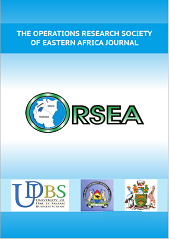The Best FDI Inflows Can Do on Unemployment Rates in Tanzania: A Time Series Analysis
Abstract
The paper explores the impact of Foreign Direct Investment (FDI) on unemploymentrates in Tanzania, utilizing data spanning from 1992 to 2022. It is essential to
recognize that many least-developed countries (LDCs) have strategically implemented
measures to boost FDI acquisition, acknowledging its direct influence on national
growth through increased employment opportunities. The study utilizes the Augmented
Dickey-Fuller (ADF) test to examine the unit root and subsequently applies the
Autoregressive Distributed Lag (ARDL) model. The findings indicate that FDI and
GDP growth rates exhibit appropriate signs. Importantly, the paper establishes a
negative relationship between the unemployment rate and FDI inflows in Tanzania.
Therefore, to alleviate unemployment, it is crucial for the Tanzanian economy to
actively attract more FDI. Achieving this objective requires leveraging policy
instruments such as exchange rates, inflation management, political stability, human
capital development, and optimizing legal and regulatory frameworks. Implementing
these measures will create a conducive environment for increased FDI inflows into
Tanzania.
Key Words: FDI inflow, unemployment rates, time series, Tanzania






